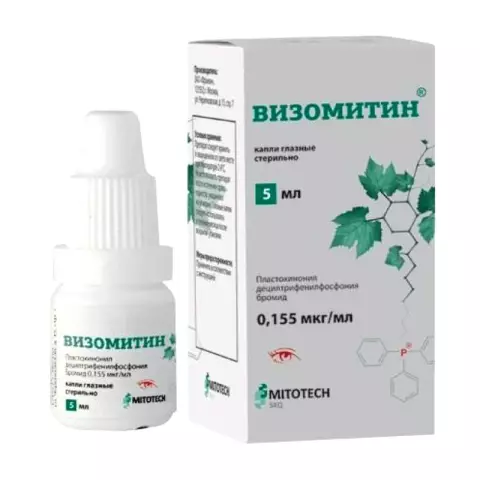- Author Curtis Blomfield [email protected].
- Public 2023-12-16 20:44.
- Last modified 2025-01-23 17:01.
Infectious lesions of the eyes are now often diagnosed in medical practice. In ophthalmology, drugs from the group of sulfonamides are often used. They have a bacteriostatic effect against many pathogenic microorganisms. In fact, there are many such drugs. One of them is Sulfacetamide eye drops. According to numerous reviews, the drug helps to get rid of many infectious diseases.

Brief description of the medicinal product
Eye drops "Sulfacetamide" - an ophthalmic antimicrobial drug, presented in the form of a white transparent liquid. Belongs to the group of sulfonamides. The medicine is placed in vials with a capacity of five or ten milliliters. One milliliter of solution contains 200 or 300 milligrams of the main activesubstances - sodium sulfacetamide. As additional components, the drops contain water for injection, hydrochloric acid solution, sodium thiosulfate.
Often doctors prescribe these drops for conjunctivitis in children. Also, the medication is prescribed in the following cases:
- blepharitis;
- purulent corneal ulcers;
- conjunctivitis;
- blenorrhea in newborns, including as a preventive measure;
- gonorrheal and chlamydial lesions of the organs of vision in adults.
Store this drug at a temperature of eight to fifteen degrees Celsius. When the vial is opened, the shelf life is twenty-eight days, if it has not been opened, it is two years.
Drug action

Sulfacetamide eye drops is an antimicrobial agent that is active against many pathogenic microbes, for example: Escherichia coli, Toxoplasma, actinomycetes, chlamydia, gonococci, plague bacillus, corynebacteria, etc.
The active substance disrupts the production of tetrahydrofolic acid, which is necessary for the formation of purines and pyrimidines. This leads to a breakdown in the production of DNA and RNA of pathogens, stops their active reproduction. Thus, the drug has a bacteriostatic effect.
The drug penetrates into the eye tissue, has a local effect. A small part of the drug enters the systemic circulation through the conjunctiva.
Sulfacetamide: trade name and instructions
In pharmaciesthe drug with sulfacytamide is produced under the name "Sulfacyl-sodium". These are eye drops with 20% or 30% of the active substance in solution, placed in 5 or 10 ml vials.
Adults are prescribed a remedy with a 30% concentration in the amount of two or three drops in each eye six times a day. The course of therapy is from seven to ten days. The attending doctor will describe the treatment regimen in more detail.

Drops for conjunctivitis in children are used, starting from the age of two months, in the amount of 0.1 ml in each eye four times a day. In this case, the solution should be 20%. The course of therapy is set by the pediatrician.
For the prevention of blennorrhea in newborns, a 20% solution is used, two drops are instilled into each eye immediately after birth, and then two more drops two hours later.
Restrictions on application
Contraindications include high susceptibility to the components of the drug. The drug is used with caution during pregnancy and breastfeeding, as there is evidence that the drug has caused the development of jaundice in children.
In medical practice, cases of death due to the development of an allergy to sulfanilamide have been recorded. Stevens-Jones disease, liver necrosis may also develop. Therefore, it is strictly forbidden to use the drug for those who are prone to allergic reactions to the active substance. At the first sign of allergy development, stop taking the medication and consult a doctor.
The effect of the drug on the speed of mentalreactions have not been studied. Long-term use of the drug leads to the development of insensitivity of pathogens to it.

Increase the toxicity of salicylates and diphenin drops. The effect of the drug is reduced with the simultaneous use of dicaine, novocaine. Do not use the medication together with silver s alts.
Adverse effects and overdose
Sulfacetamide eye drops may cause side effects:
- allergy;
- fungal and bacterial ulcers of the cornea of the organs of vision;
- burning and eye irritation;
- nonspecific conjunctivitis;
- development of secondary infection;
- death due to severe reaction to sulfonamides.
Frequent use of drops is not allowed. There may be irritation and itching, swelling of the eyelids. In this case, it is recommended to reduce the dosage of the drug or cancel it completely. Therapy is symptomatic.
Cost of the drug, analogues
You can buy drops in almost any pharmacy in the country. This does not require a doctor's prescription. But self-medication is prohibited, as there are known cases of death from this medicine. It costs from twenty to seventy rubles, depending on the pharmacy chain and the manufacturer.

Analogues of Sulfacetamide eye drops:
- "Sulfacyl sodium-DIA" has a similar composition and pharmacological action. Its cost is aboutthirty-seven rubles.
- "Sulfatsil-sodium" - antimicrobial eye drops. The price of the medicine is twenty rubles.
- "Sulfacyl sodium" costs thirteen rubles. The drug can also be produced in the form of an eye ointment.
Thus, Sulfacetamide eye drops are an inexpensive but effective remedy against infectious pathologies of the organs of vision. But they must be used carefully, only after consulting a doctor.






